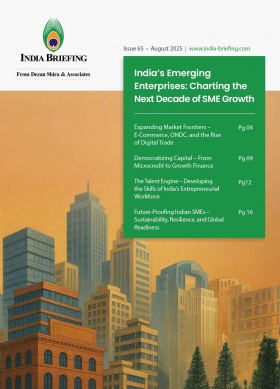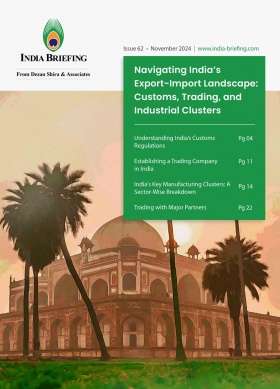India’s Smartphone Shipments Grow 3% in Q3 2025: Vivo Leads, Apple Hits Record High
India’s smartphone market recorded a modest 3 percent year-on-year (YoY) growth in the third quarter (Q3) of calendar year 2025, marked by the festive season, reaching 48.4 million units shipped into the country. The findings published on October 21, 2025, by Omdia, a research firm, caution that this early momentum may not translate into a strong year-end performance.
Drivers of modest growth
The uptick in shipments into India was primarily attributed to a surge of new product launches in July and August, retail incentive programs, and an earlier festive season that accelerated inventory movement. Vendors in India reportedly filled distribution channels in anticipation of the ongoing festive demand, although actual consumer uptake remained limited.
Market leader rankings
The research data showed smartphone brand Vivo (excluding iQOO) maintaining its top position with 9.7 million units shipped to India, securing a 20 percent market share. Samsung followed with 6.8 million units (14 percent), while Xiaomi reclaimed the third spot by a narrow margin over OPPO (excluding OnePlus), both shipping 6.5 million units.
|
India’s Smartphone Shipments and Annual Growth |
|||||
|
Vendor |
Shipments in Q3 2025 (units in million) |
Market share in Q3 2025 |
Shipments in Q3 2024 (units in million) |
Market share in Q3 2024 |
Annual growth |
|
*Vivo |
9.7 |
20% |
8.2 |
17% |
19% |
|
Samsung |
6.8 |
14% |
7.5 |
16% |
-9% |
|
Xiaomi |
6.5 |
13% |
7.8 |
17% |
-17% |
|
**OPPO |
6.5 |
13% |
6.3 |
13% |
3% |
|
Apple |
4.9 |
10% |
3.3 |
7% |
47% |
|
Others |
14 |
29% |
13.9 |
30% |
1% |
|
Total |
48.4 |
100% |
47.1 |
100% |
3% |
Source: Omdia Smartphone Market Pulse Q3 2025
Note: *Vivo smartphone shipment excludes IQOO phones. **OPPO smartphone shipment excludes OnePlus.
Apple’s expanding footprint in India
Apple achieved a record shipment volume of 4.9 million units in Q3 2025, driven by strong performance in smaller cities and the launch of the locally manufactured iPhone 17. The iPhone 17 series, launched in September 2025, accounted for nearly 20 percent of Apple’s shipments that quarter.
Experts noted that older iPhone models such as the iPhone 16 and 15 drove volumes under festive discounts, while the iPhone 17 base model attracted upgrades from the iPhone 12-15 user base.
The research company highlighted that Apple had ramped up local production to cater to both domestic demand and export markets. The brand also strengthened its retail network through two flagship stores in metro cities and an expanded Apple Preferred Partner network in India’s non-metro areas.
Read More: Apple’s Contract Manufacturers and Component Suppliers in India
India’s smartphone market: Sales trends and competitive shifts
As Apple’s market share rose, Samsung and Xiaomi reportedly saw 2-4 percent declines in share. A separate, complementary research by Counterpoint indicated that Apple’s shipments in India grew 60 percent YoY in Q2 2025, while International Data Corporation (IDC) projected Apple could reach 14.5-15 million annual shipments, placing it among India’s top five smartphone brands.
As per Counterpoint Research, Apple’s iPhone global shipment market share has experienced both consistent growth and periodic fluctuations over time. The company held a 9 percent share in 2008, which rose to 14 percent in 2009.
The report, released on October 5, 2025, states Apple achieved its highest recorded share of 18 percent in 2011, reflecting the brand’s expanding global popularity and strong sales performance. However, the rise of Android smartphones intensified competition, leading to a gradual decline; Apple’s share fell to 12 percent by 2015 and remained near 11 percent for the following few years.
The introduction of the iPhone 12 series in 2020 marked a turning point, pushing Apple’s market share back to 12 percent, which further climbed to 14 percent in 2021. Over the next two years, Apple sustained its growth trajectory, maintaining a 16 percent share in both 2022 and 2023. As of 2024, the company’s shipment market share continues to hold steady at 16 percent, highlighting global demand for its devices.
Growth in the refurbished iPhone segment
Apple’s expanding ecosystem also stimulated the refurbished smartphone market. Market reports suggest iPhones 11, 12, and 13 collectively accounted for over 25 percent of refurbished phone sales in India since September 2025.
- iPhone 11 was priced between INR 10,000 (US$113.91) and INR 20,000 (US$227.8),
- iPhone 12 between INR 20,000 (US$227.8) – INR 25,000 (US$284.78), and
- iPhone 13 between INR 25,000 (US$284.78) – INR 35,000 (US$398.6).
Meanwhile, Omdia noted strong discounting activity across channels on iPhone 15 and 16 models leading up to the iPhone 17 launch, including cashbacks, trade-in bonuses, loyalty points, and zero-down-payment equated monthly installments (EMIs). These offers, particularly effective in Tier-2 and Tier-3 cities, further enhanced Apple’s reach.
Retail incentives and market challenges
The Omdia report states that smartphone vendors redirected marketing budgets toward incentive-led retail programs. These initiatives ranged from cash-per-unit bonuses and tiered dealer margins to contests rewarding top performers with gold coins, motorcycles, and international trips.
Such strategies encouraged distributors and retailers to absorb higher inventories before the festive season. Simultaneously, vendors introduced consumer-focused financing options, including micro-installment plans, bundled accessories, and extended warranties, to boost conversions.
India’s smartphone retail consumption trends
India’s smartphone retail landscape in 2025 is undergoing a structural transformation, moving from value-driven mass consumption toward experience-led and premium-oriented purchasing behavior. This shift is being driven by rising disposable incomes, broader access to consumer financing, and growing demand for technologically advanced devices that enhance both productivity and lifestyle.
Premiumization and value perception
Another notable trend in India’s smartphone market is premiumization. Global smartphone brands such as Apple and Samsung are capitalizing on this transition by combining local manufacturing with strategic pricing, thereby making their flagship models more accessible to Indian consumers. Apple’s record performance shows the success of its expanding retail footprint and localized assembly operations, while Samsung continues to strengthen its appeal among aspirational buyers through its diversified S Series and Galaxy A lineup.
At the same time, Chinese brands, including Vivo, Oppo, and OnePlus, are broadening the market’s premium segment by offering “affordable premium” devices in the INR 30,000 (US$341.9)- 45,000 (US$512.9) range. These models emphasize camera quality, fast charging, and AI-driven experiences – features that resonate strongly with younger, tech-savvy consumers. OnePlus, in particular, is regaining momentum through renewed collaboration with offline partners and its planned INR 60 billion (US$683.9 million) investment in domestic market expansion, signaling a focused strategy to capture India’s growing mid-to-premium retail base.
Offline retail as the anchor channel
While e-commerce continues to expand, offline retail remains the cornerstone of India’s smartphone sales ecosystem. Physical stores continue to play a vital role in influencing purchase decisions in India, particularly in the premium segment where consumers prefer to experience devices firsthand and rely on personalized guidance from trusted retailers.
Market reports indicate stronger pre-bookings and faster stock movement than 2024, especially across metropolitan and Tier-1 cities. This positive momentum is now extending to Tier-2 and Tier-3 markets, where consumers are upgrading from entry-level smartphones to affordable 5G models. Brands such as Xiaomi and Realme are leading this wave with competitively priced 5G offerings in the INR 10,000 (US$113.9) – 15,000 (US$170.9) range, supported by flexible financing schemes and zero-cost EMI options.
Outlook
Despite the Q3 boost, market reports have caution for Q4 2025. Inventory buildup and sluggish sell-through rates may weigh on market performance.
While rural demand has remained stable, it is insufficient to offset weak urban sentiment. Industry experts expect the overall smartphone market to post a marginal decline for 2025, reflecting a fragile recovery cycle influenced by macroeconomic conditions and ongoing channel adjustments.
(US$1 = INR 87.72)
About Us
India Briefing is one of five regional publications under the Asia Briefing brand. It is supported by Dezan Shira & Associates, a pan-Asia, multi-disciplinary professional services firm that assists foreign investors throughout Asia, including through offices in Delhi, Mumbai, and Bengaluru in India. Dezan Shira & Associates also maintains offices or has alliance partners assisting foreign investors in China, Hong Kong SAR, Vietnam, Indonesia, Singapore, Malaysia, Mongolia, Dubai (UAE), Japan, South Korea, Nepal, The Philippines, Sri Lanka, Thailand, Italy, Germany, Bangladesh, Australia, United States, and United Kingdom and Ireland.
For a complimentary subscription to India Briefing’s content products, please click here. For support with establishing a business in India or for assistance in analyzing and entering markets, please contact the firm at india@dezshira.com or visit our website at www.dezshira.com.
- Previous Article How Amazon Inc. Built its India Fulfilment Empire
- Next Article 投资印度南部:为跨国企业开启增长新机遇








